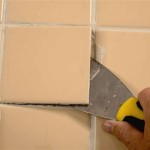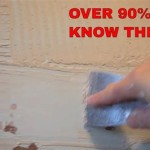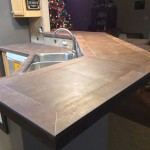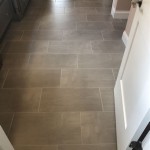Tile to Carpet Transition Strip Ideas: Enhancing Your Interior Decor
When different flooring materials meet, a transition strip is used to create a smooth and seamless connection while concealing the exposed edges. Tile to carpet transition strips serve this purpose, bridging the gap between the hard surface of tiles and the soft texture of carpets.
Choosing the right transition strip for your space requires consideration of factors such as durability, style, and functionality. Here are some essential aspects to explore when selecting tile to carpet transition strips:
1. Materials and Durability
Transition strips are available in various materials, including aluminum, stainless steel, brass, wood, and PVC. Aluminum and stainless steel offer exceptional durability and resistance to wear and tear, making them ideal for high-traffic areas.
2. Style and Finish
Transition strips come in a range of finishes, including brushed, polished, and anodized. Brushed finishes provide a subtle and understated look, while polished finishes add a touch of elegance and reflectivity. Anodized finishes enhance durability and come in various colors, allowing you to match the strip to your décor.
3. Height and Profile
The height and profile of the transition strip depend on the thickness of the tile and carpet. It's crucial to select a strip that matches the height difference between the two flooring materials, ensuring a flush transition.
4. Flush vs. Overlapping
Flush transition strips lie directly on the edge of the tile and carpet, creating a seamless joint. Overlapping transition strips extend over both the tile and carpet, providing a more pronounced transition.
5. Threshold Ramps
For areas where a significant height difference exists between the tile and carpet, threshold ramps offer a gradual transition. They are designed to accommodate wheelchairs and other mobility aids, ensuring accessibility.
6. T-Molding and Reducer Strips
T-molding transition strips feature a "T" shape, fitting into the gap between the tile and carpet. Reducer strips, on the other hand, have a sloping surface that transitions from the tile to the carpet, creating a more subtle transition.
7. Installation and Maintenance
Proper installation is crucial for the longevity and functionality of transition strips. Professional installers can ensure a seamless installation and provide guidance on maintenance procedures. Regular cleaning and occasional waxing can help maintain the appearance and extend the lifespan of your transition strips.
By considering these essential aspects, you can select tile to carpet transition strips that enhance the aesthetic appeal of your space while providing a practical solution for bridging the gap between different flooring materials.

4 Tile To Carpet Transition Options For A Stunning Floor

Tile To Carpet Transition 4 Options For A Stunning Floor

4 Tile To Carpet Transition Options For A Stunning Floor

Tile To Carpet Transition 4 Options For A Stunning Floor

4 Tile To Carpet Transition Options For A Stunning Floor

6 Tile To Carpet Transition Options For Flooring

4 Tile To Carpet Transition Options For A Stunning Floor

4 Tile To Carpet Transition Options For A Stunning Floor

Tile To Carpet Transition A Look At The Best Options For Your Home

How To Fix Carpet Tile Transition Beginner S Guide Expert Tips Buy
Related Posts








